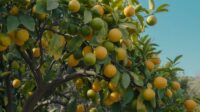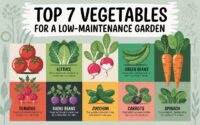Fennel in Your Garden: Benefits and Growing Tips
Published: 2025-10-18
Fennel is more than just a flavorful herb. It is a powerhouse of nutrients and a versatile plant that can enhance your garden’s health and beauty. Whether you are growing fennel for its culinary uses or its medicinal properties, this guide will help you understand everything from planting to harvesting.
Why Grow Fennel in Your Garden
Fennel is valued for its feathery foliage, aromatic seeds and crisp bulb. It belongs to the carrot family and is known for its licorice-like flavor. However, its benefits go far beyond taste.
- Fennel improves digestion
- It reduces inflammation
- It supports respiratory health
- It attracts pollinators like bees and butterflies
- It repels harmful insects
Because of these qualities, fennel is often used in companion planting. It enhances biodiversity and supports a healthy garden ecosystem.
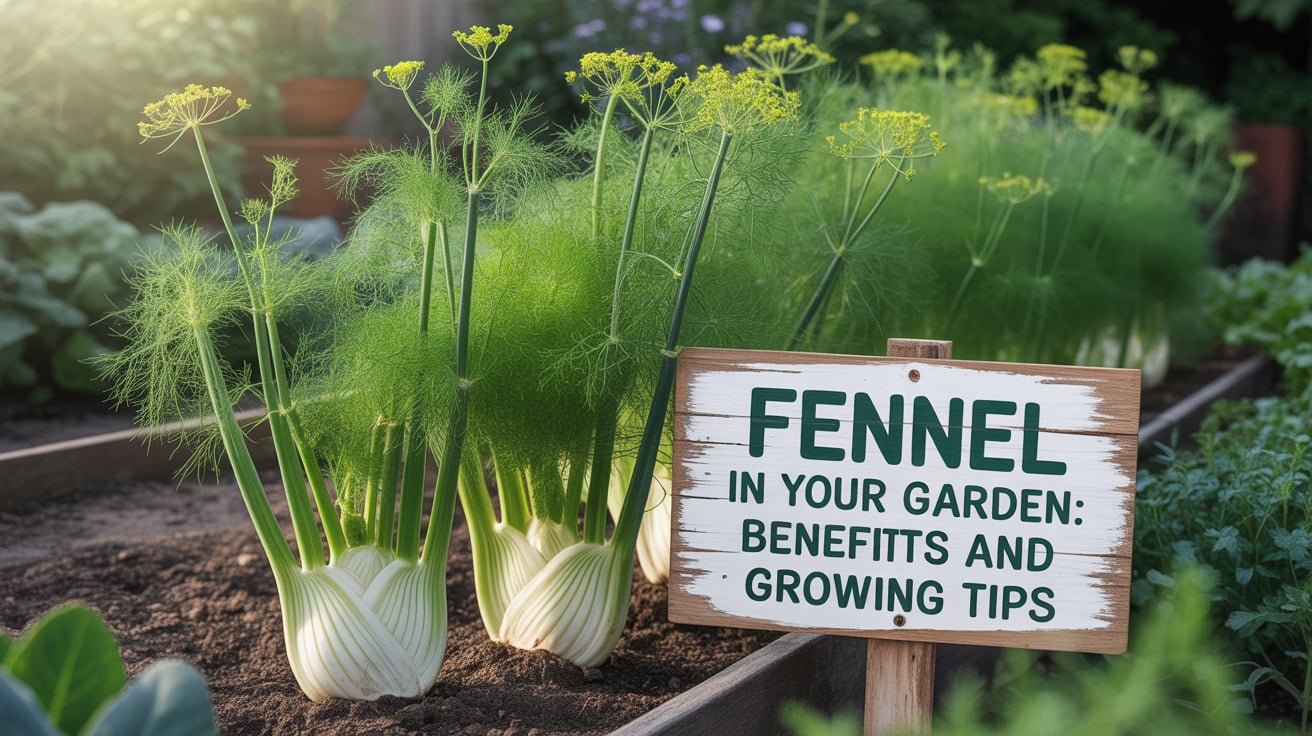
Nutritional and Medicinal Benefits of Fennel
Fennel is rich in essential nutrients. It contains vitamin C, potassium, fiber and antioxidants. These nutrients support immune function and reduce oxidative stress.
| Nutrient | Benefit | Amount per 100g |
|---|---|---|
| Vitamin C | Boosts immunity | 12 mg |
| Potassium | Regulates blood pressure | 414 mg |
| Fiber | Supports digestion | 3.1 g |
| Anethole | Anti-inflammatory compound | Present in seeds and oil |
Fennel seeds are often used in herbal teas. They relieve bloating and soothe the stomach. The bulb can be eaten raw or cooked. It adds crunch and flavor to salads and soups.
Types of Fennel to Grow
There are two main types of fennel:
- Florence fennel (Foeniculum vulgare var. azoricum): Grown for its bulb
- Common fennel (Foeniculum vulgare): Grown for its leaves and seeds
Florence fennel is ideal for culinary use. Common fennel is better for herbal remedies and pollinator gardens.
| Type | Use Case | Growth Habit |
|---|---|---|
| Florence Fennel | Bulb for cooking | Compact, thick base |
| Common Fennel | Seeds and foliage | Tall, airy foliage |
Choose the variety based on your garden goals.
Best Growing Conditions for Fennel
Fennel thrives in full sun and well-drained soil. It prefers a pH between 6.0 and 7.0. Although it tolerates poor soil, it performs best in fertile ground.
Soil preparation tips:
- Add compost before planting
- Avoid heavy clay soils
- Ensure good drainage
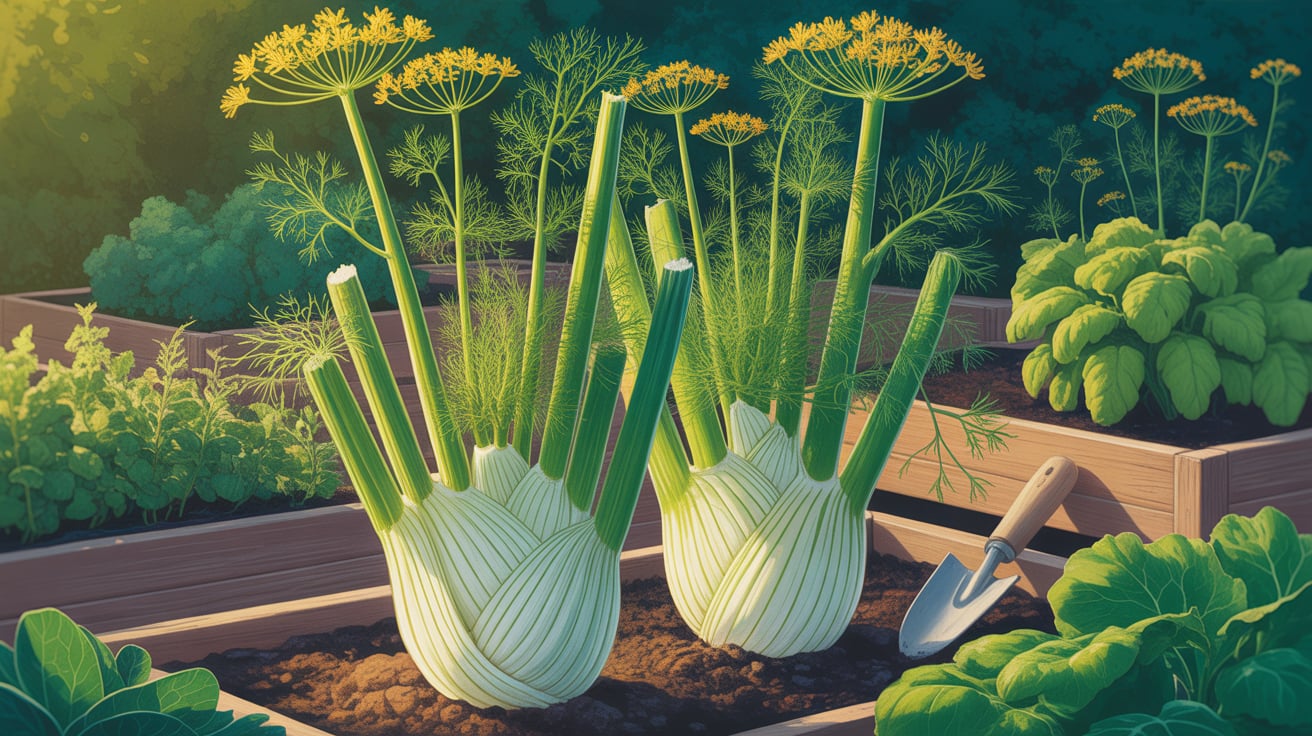
Climate needs:
- Grows well in cool to mild climates
- Avoid extreme heat during bulb formation
Fennel is a hardy plant. However, it bolts quickly in hot weather. Therefore, spring and fall are the best seasons for planting.
Starting fennel from seed is simple. It does not transplant well, so direct sowing is recommended.
Steps to plant fennel:
- Choose a sunny location
- Sow seeds ¼ inch deep and 12 inches apart
- Water gently and keep soil moist
- Thin seedlings to 18 inches apart once they sprout
Germination takes 7 to 14 days. Once established, fennel grows rapidly.
Watering and Fertilizing Fennel
Fennel needs consistent moisture. However, overwatering should be avoided. Water deeply once or twice a week depending on rainfall.
Fertilizer tips:
- Use compost tea or fish emulsion every 3–4 weeks
- Avoid high-nitrogen fertilizers
- Mulch to retain moisture and suppress weeds
Healthy fennel has lush green leaves and a firm bulb. Yellowing leaves may indicate nutrient deficiency or poor drainage.
Companion Planting with Fennel
Fennel is a unique plant in companion gardening. It attracts beneficial insects but can inhibit the growth of some vegetables.
Good companions:
- Dill (for pollinators)
- Calendula (for pest control)
- Coriander (for beneficial insects)
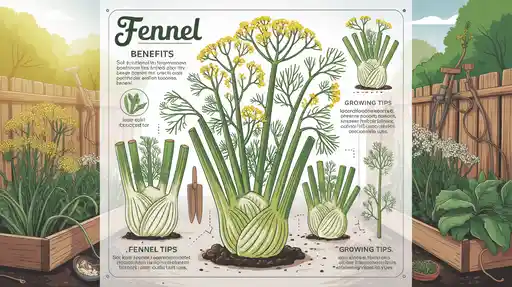
Avoid planting near:
- Tomatoes
- Beans
- Carrots
Fennel releases compounds that may stunt the growth of nearby plants. Therefore, it is best grown in a separate bed or container.
Common Pests and Diseases
Fennel is relatively pest-resistant. However, it can still face some challenges.
| Pest/Disease | Symptoms | Natural Control Methods |
|---|---|---|
| Aphids | Sticky residue, curled leaves | Neem oil, ladybugs |
| Whiteflies | Tiny white insects on leaves | Yellow sticky traps |
| Root rot | Wilting, mushy roots | Improve drainage, avoid overwatering |
Regular inspection helps catch problems early. Most issues can be managed with organic methods.
Harvesting Fennel
Fennel can be harvested at different stages depending on the part you want to use.
- Bulbs: Harvest when they are the size of a tennis ball
- Leaves: Snip as needed for garnish or tea
- Seeds: Collect when flower heads turn brown
Use a sharp knife to cut bulbs at soil level. Dry seeds in a paper bag before storing.
Fennel is versatile in the kitchen. The bulb can be roasted, grilled or eaten raw. Leaves add flavor to salads and soups. Seeds are used in spice blends and teas.
Storage tips:
- Bulbs: Refrigerate in a plastic bag for up to 10 days
- Leaves: Store in a damp towel in the fridge
- Seeds: Keep in an airtight jar in a cool place
Fennel tea is a popular remedy. It is made by steeping crushed seeds in hot water for 10 minutes.
Fennel in Herbal Medicine
Fennel has been used in traditional medicine for centuries. It is known for its carminative and anti-inflammatory properties.
Health benefits:
- Relieves bloating and gas
- Eases menstrual cramps
- Supports lactation in nursing mothers
- Reduces cough and congestion
Fennel tea is a popular remedy. It is made by steeping crushed seeds in hot water for 10 minutes.
Growing Fennel in Containers
Fennel can be grown in pots if space is limited. Choose a container at least 12 inches deep.
Container growing tips:
- Use well-draining potting mix
- Place in full sun
- Water regularly
- Fertilize monthly with compost tea
Container-grown fennel is ideal for balconies and patios.
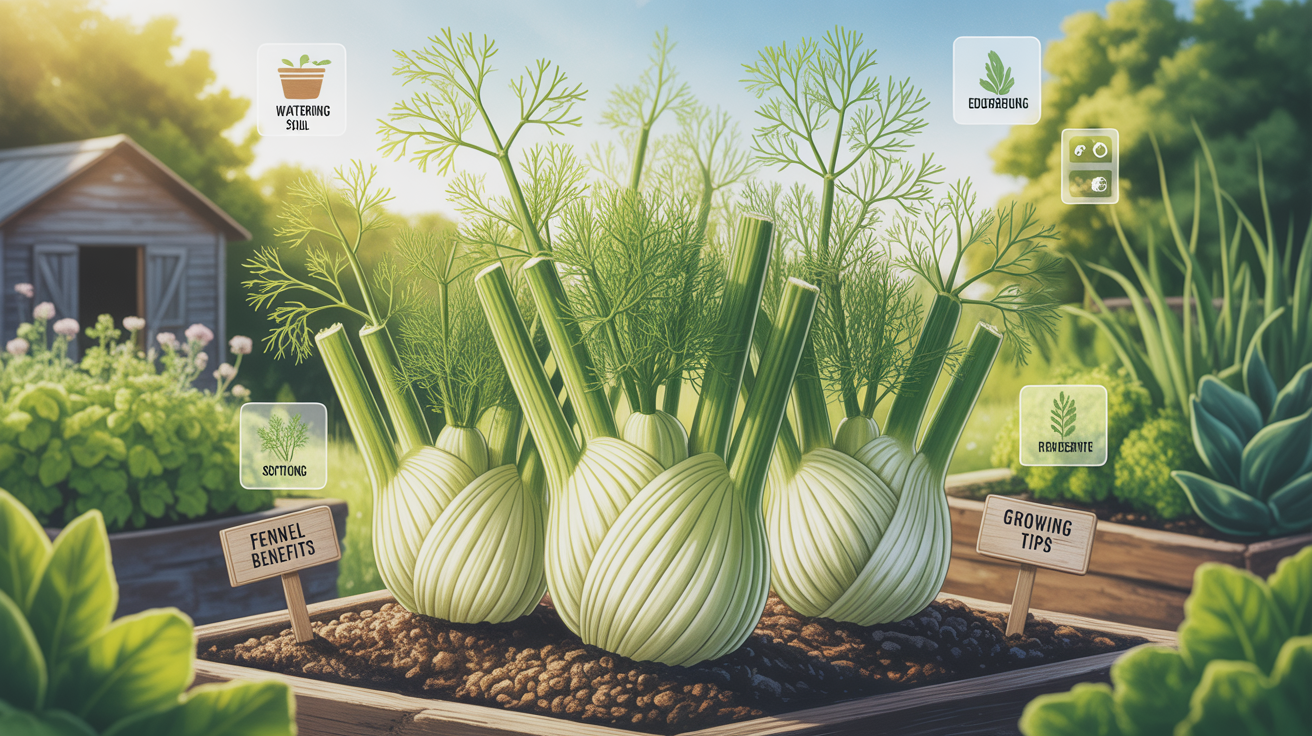
Saving Fennel Seeds
Saving seeds allows you to grow fennel year after year.
Steps to save seeds:
- Let flower heads dry on the plant
- Cut and place in a paper bag
- Shake to release seeds
- Store in a cool dry place
Label seeds with the date and variety. Use within two years for best germination.
garden.
To support pollinators:
- Let some fennel plants flower
- Avoid chemical sprays
- Provide water sources nearby
Pollinator-friendly gardens are more producti
Frequently Asked Questions (FAQs)
Yes, fennel is low-maintenance and grows well in most climates.
Fennel needs full sun, so it is best grown outdoors or in a sunny window.
Bulbs are ready in 80–100 days. Leaves and seeds can be harvested earlier.
Yes, fennel leaves are edible and flavorful.
Fennel is a short-lived perennial in warm climates but often grown as an annual.

- Be Respectful
- Stay Relevant
- Stay Positive
- True Feedback
- Encourage Discussion
- Avoid Spamming
- No Fake News
- Don't Copy-Paste
- No Personal Attacks



- Be Respectful
- Stay Relevant
- Stay Positive
- True Feedback
- Encourage Discussion
- Avoid Spamming
- No Fake News
- Don't Copy-Paste
- No Personal Attacks
